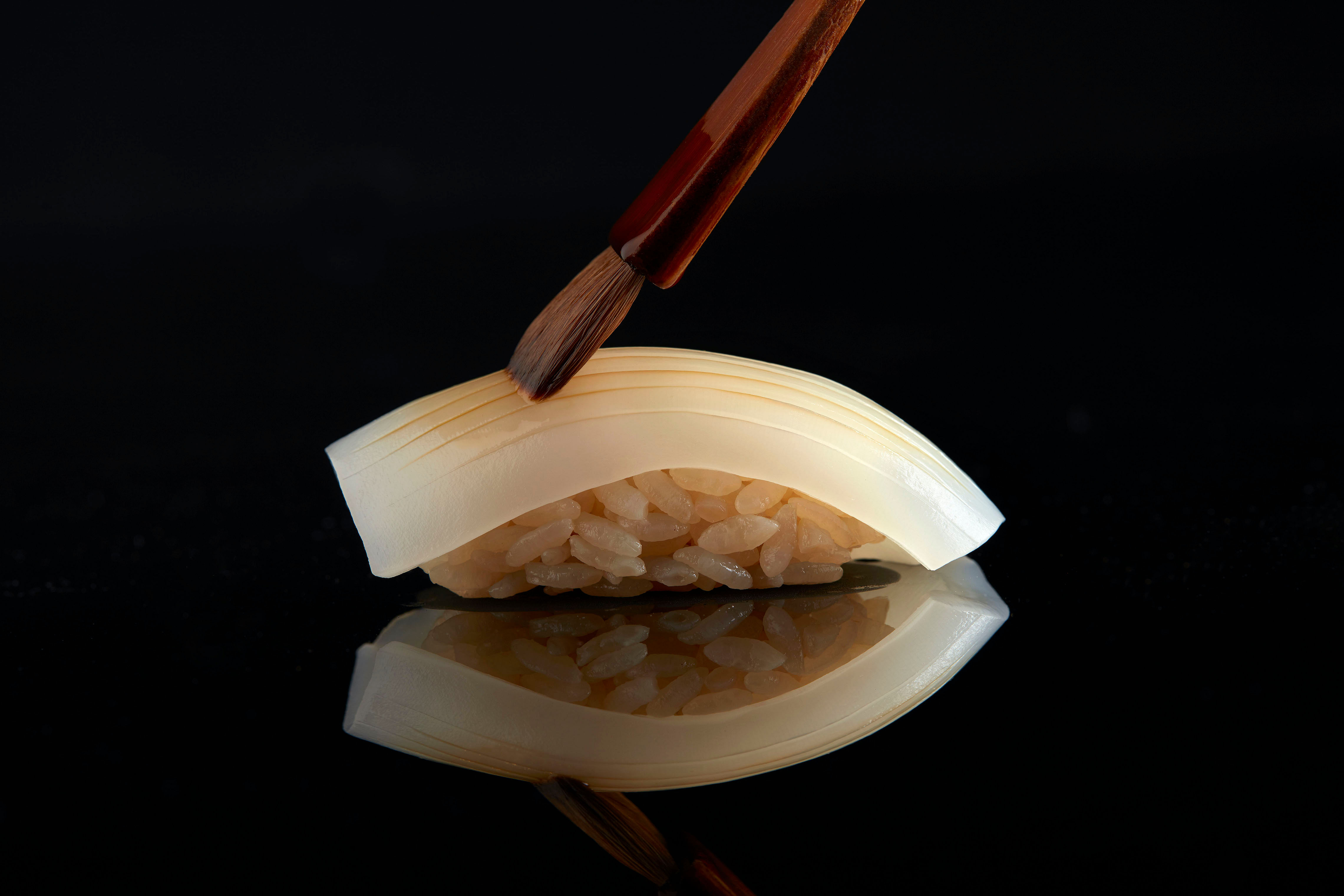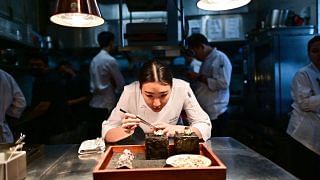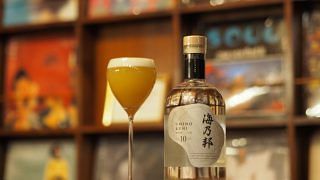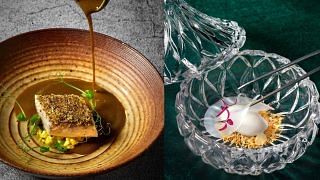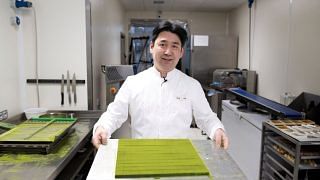Joining the new entrants enlivening up the Dempsey enclave, Sushi Sato was conceived in the midst of the pandemic with no delays; a surprise given that new places have had to and still have to deal with shipment delays. Perhaps blessed with a very resourceful middleman, the sushi restaurant had no issues procuring 200-year-old Hinoki wood for its nine-seater (now six due to restrictions) counter for the centrepiece of its dining room.
The main dining room is entirely cloaked in natural materials from the textured doors to the shoji sliding screens over the windows. Two clear glass panel cut-outs offer a view of the greenery outside, achieving chef Yuji Sato’s intention of dining in a garden. There’s a small private dining room that’s not open to the public yet, but as you’d know, the best seats are right by the action.
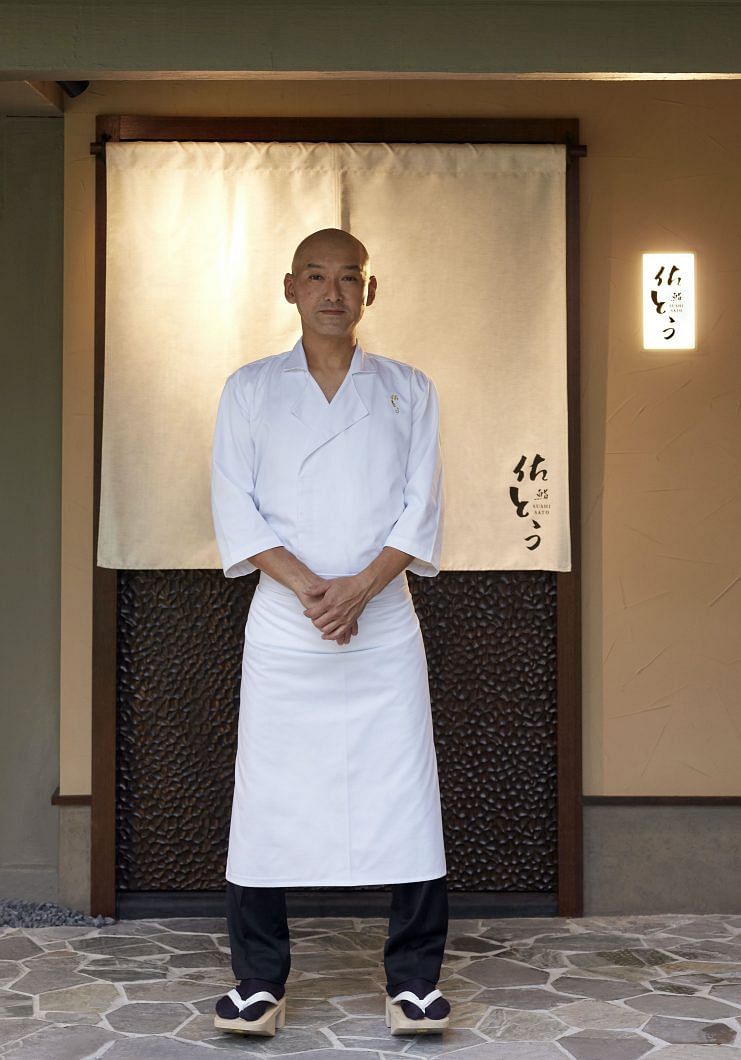
With 26 years of experience and a fair amount of tutelage under Hatch-san, there’s no doubting Sato’s skills as an itamae. Here, he showcases his approach of “hot is hot, cold is cold”, a simplistic statement that essentially explains why he does his cooking a la minute and most of the time behind the counter. There are three menus for lunch — Uruoi, Utsukushi and Tomi — while dinner offers two options of Omakase and the most extravagant Kokoro (meaning ‘heart, spirit and wisdom’) course.
For all the premium produce flown in from Japan four times a week and the price tag, dining at Sushi Sato is a distinctly more relaxed affair than its counterparts. Make no mistake, you’ll be getting the same highly-skilled knife work and impeccable Japanese cuisine, but Sato’s easygoing demeanour makes the experience void of any pretentiousness.
Seated at the counter, you’re privy to how he plans for the omakase menu to come. Writing down the produce available for the day with a paintbrush pen on a piece of white cloth, he takes a moment to circle the ingredients he intends to use. Out of all the omakase meals we’ve had, this is the first where we’ve had the privilege of witnessing how this is done. This transparency is a precursor to the genuine hospitality that follows as Sato soon gets into the swing of things.
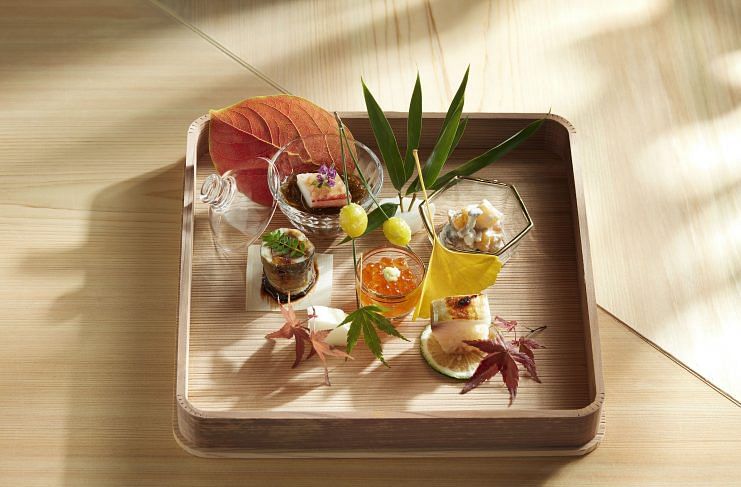
Showcasing traditional techniques, he starts our Kokoro course with the obligatory chawanmushi and an assortment of small bites. The soft steamed egg custard, concealing creamy shirako (cod milt) within, is followed by a platter of six appetisers of different flavours and textures. Portioned just right, they include tiny pops of herring roe shaped into a cube with a sliver of kelp in between, fine seaweed strands in dashi and vinegar, and burdock root wrapped in anago.
What follows next is a meandering journey between cold and hot dishes as he serves grilled, fried, and steamed dishes between two courses of sushi at a time. Japanese restaurants typically serve the cold dishes first then end with meatier, hot dishes later in the meal. Sato, however, has taken up the challenge of breaking the monotony while ensuring none overpower each other.
(Related: Omakase in Singapore: Where to go, what to know)
To do this, the sushi that follows a cooked dish tends to be fattier (also one of the advantages of wild caught fish in colder waters of winter). After the dish of a steamed Snow Crab cake with Maitake mushrooms roasted over binchotan in dashi broth, for example, is a fatty slice of Pacific saury or sanma on shari (made from three red vinegars and Tsuyahime rice from Yamagata Prefecture). The sushi’s garnish of pounded spring onions and ginger help cleanse the palate for the subsequent leaner cut of sea bream.
The fattiest fish, of course, is saved for the end. Buri, a name specifically for yellowtail weighing over 10kg, gets a fine marbling equivalent to otoro in winter. It’s followed by agedashi oyster, the plump mollusc coated in a thin crisp golden batter, and Sato’s famed ika somen, thinly sliced squid with even thinner slivers of mountain yam in dashi broth (it’s only available on Tuesday and Friday for dinner).
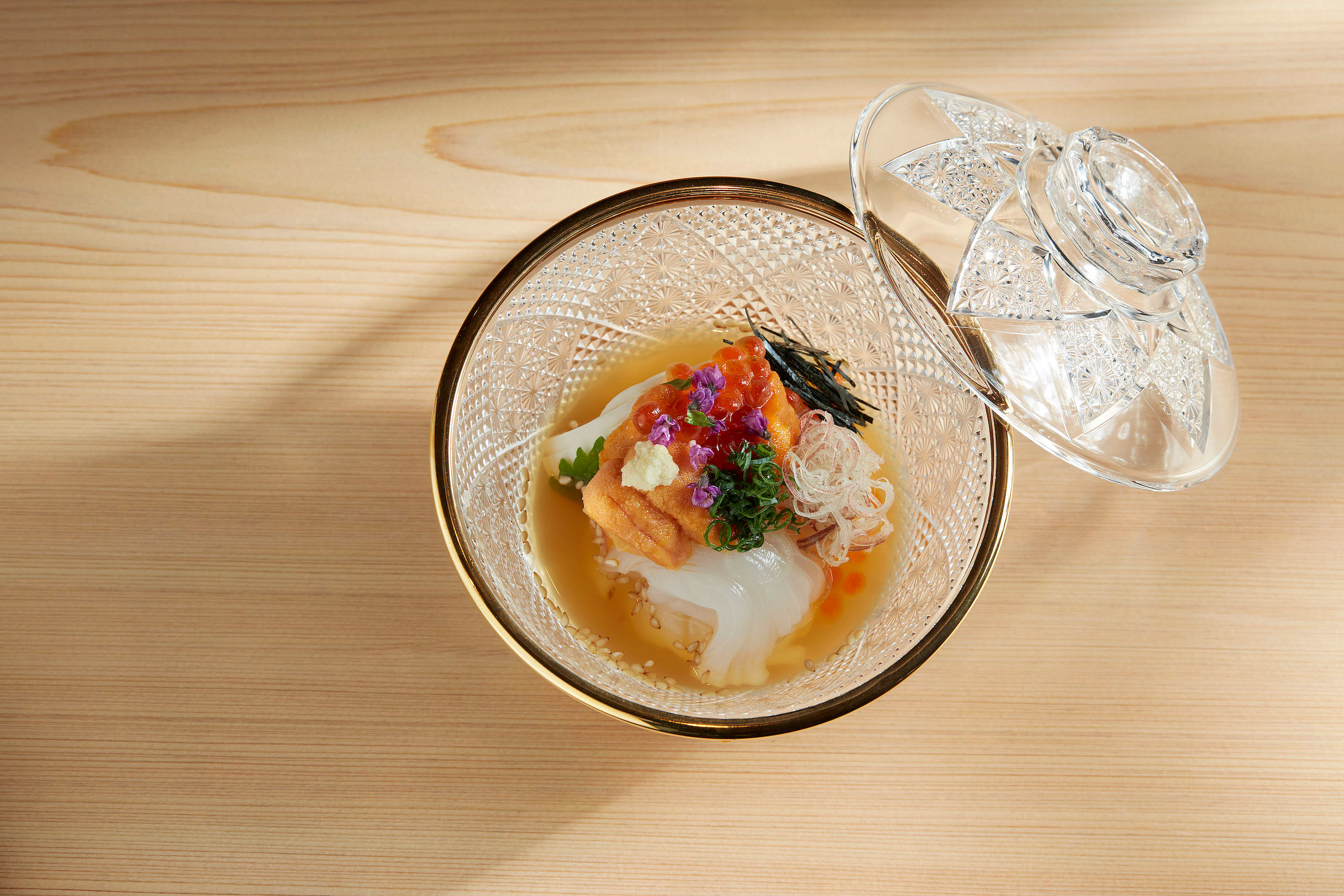
And when we think we’re almost done, we’re served an all-time Japanese favourite — well marbled otoro. Draped over rice (don’t hesitate to indicate to Sato if you’ll prefer less), it’s substantial enough to stand up against the uni and ikura rice bowl, and piping hot miso soup before it. Uni, he says, is increasingly expensive as ocean temperatures keep rising.
Complementing the seafood-focused omakase, Sato prefers a drier style of sake and has produced three exclusive bottles: Juyondai Gold Label Takagi Shuzo, Juyondai Black Label Takagi Shuzo and N by Hidetoshi Nakata Junmai Daiginjo. A selection of eight sakes will also be available monthly in three serving sizes.
(Related: Travel inspiration: Azumi Setoda on Ikuchijima Island)
We’re told that Sushi Sato is booked out until December by old and new customers (Hashida is closed at the moment so its regulars are getting their fix here) but if you do get the chance to, this is one omakase produced by a top notch itame worth trying. Far from feeling like a stiff fine dining restaurant, Sato’s genial persona (he even laughs it off when his assistant fumbles) makes us feel as though we’ve been welcomed into his home and that’s something you can’t buy.
6B Dempsey Road, Singapore 247662. Tel: 6971 8265



